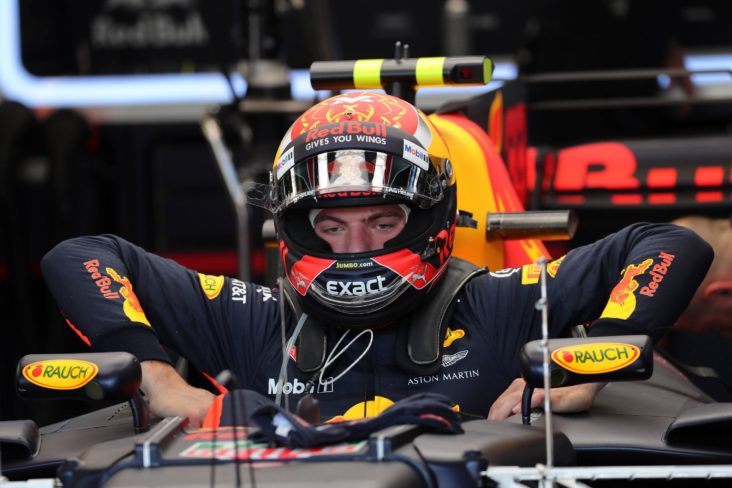5 things we learned from Azerbaijan GP Friday free practice | NR F1 Podcast

By Callum Springall
1: The return of the technological war
Waking up on Friday morning, it felt like a return to a seemingly bygone era where the leading teams would conjure up all manner of technical developments, bordering on illegality. The news during the Sky’s coverage of FP1 concerned an engine trick used by Mercedes, in which they would inject oil – as well as fuel – into the engine, thereby producing more power without increasing outright consumption of petrol, which the FIA had previously said isn’t necessarily allowed; as ever these things aren’t always accounted for in the regulations, which leaves a grey area.
In a slight plot twist, it was in fact Mercedes that became the whistleblower and requested a clarification from the FIA on a similar technique, believed to be used by Ferrari. So it would appear to be a safe assumption that the anachronistic ‘he said she said’ drama is back, having last been prevalent during the days of flexible front wings and blown exhausts.
2: That early Red Bull pace
Practice also heralded the return of the raging bulls, with both Max Verstappen and Daniel Ricciardo comfortably topping the time sheets in FP1, before the Dutchman repeated the feat in the afternoon and surprisingly enough, gained most of the time in the slow and tight middle sector – where they were consistently quick on all tyres.
I would hazard a guess they were most likely focusing on qualifying pace, since the Milton Keynes outfit were running with visibly skinnier wings than the rest of the field, and ended up pushing 330kph in the speed traps – roughly 210mph, for those of you still partial to old money. I’ll have more on that preceding thought later.
3: It could be tougher than Monaco
Possibly! There were a number of high-calibre casualties such as Fernando Alonso, Sebastian Vettel and Valtteri Bottas that all fell victim to the tough braking zones in Baku. One apparent challenge to contend with was the changing position of the sun, so if a driver was using a shadow as a braking indicator, then said braking point changed with each lap as the sun’s position changed. As do the shadows. It made consistency and rhythm both hard to come by and on the face of it, Baku would appear to be as much of a challenge – if not more – than Monte Carlo.
However unlike the oldest grand prix of them all, Baku has enough escape roads and run-off areas to allow the drivers to push the boundaries in a full-on, Schumacher-esque fashion. Hence, the track is not necessarily any tougher a test than Monaco, and certainly not less so. It’s just different.
4: Whisper it – but Lance Stroll seems to be on form
After the weight of expectation on his shoulders, being a young driver in a historically significant team, Lance Stroll seems to be coming of age – or at the very least taking some important steps, if his career is to amount to anything more than being a pay driver.
SUBSCRIBE: Listen to The NR F1 Podcast on your chosen podcast player
Having not only posted a pretty handy lap time in FP2 – around half a second faster than his team-mate – the young Canadian had a characteristically quiet couple of sessions surrounded by all of the noise outlined above, which is quite an impressive feat for someone so inexperienced when driving around a street circuit; surely the greatest challenge of any F1 driver’s season.
Overall he seems energised by his points-paying performance at his home grand prix, which he celebrated like a miniature win alongside his home support. Provided this really is a platform for success rather than a false dawn, it would represent a great return for Stroll and just reward for Williams having stuck by him when anyone in top-line sport can come and go in an instant.
5: You never count your chickens – even in Baku
Evidently differing practice programmes and therefore, a probable difference in fuel loads are potentially what put Red Bull back on their temporarily high horse. Whereas Ferrari and Mercedes were more concerned with
running the harder compounds and, most likely, race simulations.
Red Bull’s noticeably slimmer rear wings would likely account for the majority of the straight line speed advantage – and it is said advantage that may well pay off. Baku is largely dependent on power and less reliant on overall grip, meaning teams can cut the level of drag – and therefore downforce – for theoretically better lap times because there is a greater benefit to increased straight-line speed, than more downforce and the resulting quicker cornering speed.
The downside is race pace, which will be slower later on in each stint, which comes about because of increased sliding. That in turn puts undue stress through the tyre, increasing wear and bringing forward the ‘cliff’ – where the gradient in lost lap time drops off exponentially.

However, tyre wear tends to be fairly low around Baku thanks to its slow corners and low abrasion track surface. So if Red Bull can spring the most unlikely surprise to take pole position, then they may well be set fair for the race which, if it’s anything like last year, could be on the processional side. That would play to the advantage of their unusually high top speed, since they could have a chance at keeping the lead and wrecking the tyres of the trailing pack, offsetting Red Bull’s apparent disadvantage.
So the easy thing is to point out that, if nothing else, Friday practice lead to a much heightened sense of intrigue that sets us up well for the remainder of the Azerbaijan weekend.
♦ Callum Springall is a blogger with the NRF1. You can follow Callum on Twitter @callumspring18

